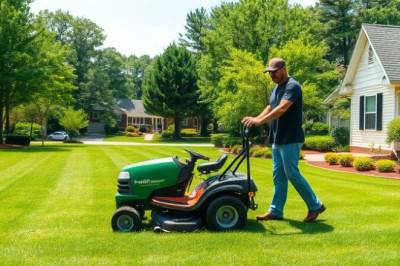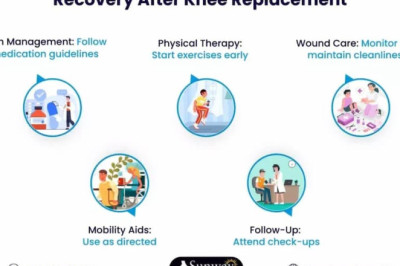views
Servery windows are a stylish and practical addition to modern homes, offering a seamless connection between indoor and outdoor living spaces. Whether you love entertaining, want better ventilation, or need a more functional kitchen layout, the right servery window can significantly enhance your home.
But with so many options available, how do you choose the best one for your needs? In this guide, we’ll explore key factors to consider when selecting a servery window to ensure you make the right choice.
What Is a Servery Window?
A servery window is a large, openable window installed above a benchtop, typically between a kitchen and an outdoor entertaining area. These windows allow for easy food and drink transfer, improve airflow, and enhance natural light. They are commonly used in homes with patios, decks, or alfresco dining areas.
Factors to Consider When Choosing a Servery Window
1. Window Style and Functionality
The first step in choosing a servery window is deciding on the type of opening mechanism that suits your space and needs. Common styles include:
Bi-Fold Servery Windows – These fold back completely, creating a wide, unobstructed opening. They are perfect for homes that prioritise airflow and easy access.
Sliding Servery Windows – These glide horizontally, allowing partial or full opening depending on your preference. They are great for compact spaces where outward-opening windows may not be practical.
Awning Servery Windows – Hinged at the top and opening outward, these windows provide excellent ventilation while protecting your kitchen from rain.
Each style has its advantages, so consider how often you'll use the window and what suits your home layout best.
2. Material Choice
The durability and maintenance of your servery window depend on the materials used. The most popular frame materials include:
Aluminium – Lightweight, durable, and resistant to rust and corrosion. Aluminium servery windows are a top choice for modern homes due to their sleek design and minimal maintenance requirements.
Timber – Offers a natural, classic aesthetic but requires regular maintenance to prevent warping and weather damage.
uPVC – Energy-efficient and low-maintenance, but not as strong as aluminium for larger window sizes.
For durability and weather resistance, aluminium is often the best choice, especially for homes exposed to outdoor elements.
3. Glass Type and Insulation
The type of glass in your servery window impacts its energy efficiency, safety, and soundproofing. Key options include:
Toughened Glass – Provides extra strength and durability, reducing the risk of breakage.
Double-Glazed Glass – Enhances insulation, keeping your home comfortable in different weather conditions.
Tinted or Low-E Glass – Reduces heat and UV rays, helping to maintain a comfortable indoor temperature.
For homes in hot or cold climates, double-glazed or Low-E glass is a great option to improve insulation and energy efficiency.
4. Size and Placement
The size and positioning of your servery window play a crucial role in its functionality. Consider:
Benchtop height – Ensure the window aligns well with your kitchen benchtop for easy serving.
Available wall space – Measure the area to ensure the window fits comfortably without obstructing existing features.
Outdoor connection – If the window opens to a patio or deck, ensure there’s enough space for seating or a bar ledge beneath it.
Choosing the right size ensures smooth operation and enhances your indoor-outdoor flow.
5. Security and Locking Mechanisms
Since servery windows connect indoor and outdoor spaces, security is an important consideration. Look for:
Keyed locks – For added protection when the window is not in use.
Multi-point locking systems – Enhance security by locking at multiple points along the frame.
Flyscreens or Security Screens – Prevent insects from entering while maintaining ventilation.
For homes in areas prone to break-ins, reinforced locks and toughened glass provide extra peace of mind.
6. Aesthetic Appeal
Servery windows should not only be practical but also complement your home’s architecture and interior design. Consider:
Frame colour – Choose a finish that matches your existing windows and doors.
Hardware finishes – Handles and locks should blend well with your home’s aesthetic.
Surrounding décor – Think about how the window will integrate with your kitchen and outdoor entertaining space.
Customisation options allow you to create a cohesive look that enhances your home’s overall appeal.
7. Budget Considerations
While it’s important to invest in quality, you should also set a realistic budget based on your needs. Factors that affect cost include:
Size and style of the window
Choice of materials and glass
Additional features like security locks and screens
Installation complexity
Getting quotes from reputable suppliers ensures you get the best value without compromising quality.
In summary, choosing the right servery window for your home requires careful consideration of style, material, glass type, security, and aesthetics. Whether you opt for a bi-fold, sliding, or awning window, selecting a high-quality and durable option will enhance your indoor-outdoor connection, improve ventilation, and make entertaining a breeze.
Looking for the perfect servery window for your home? Contact us today to explore our premium range of stylish and durable options!




















Comments
0 comment